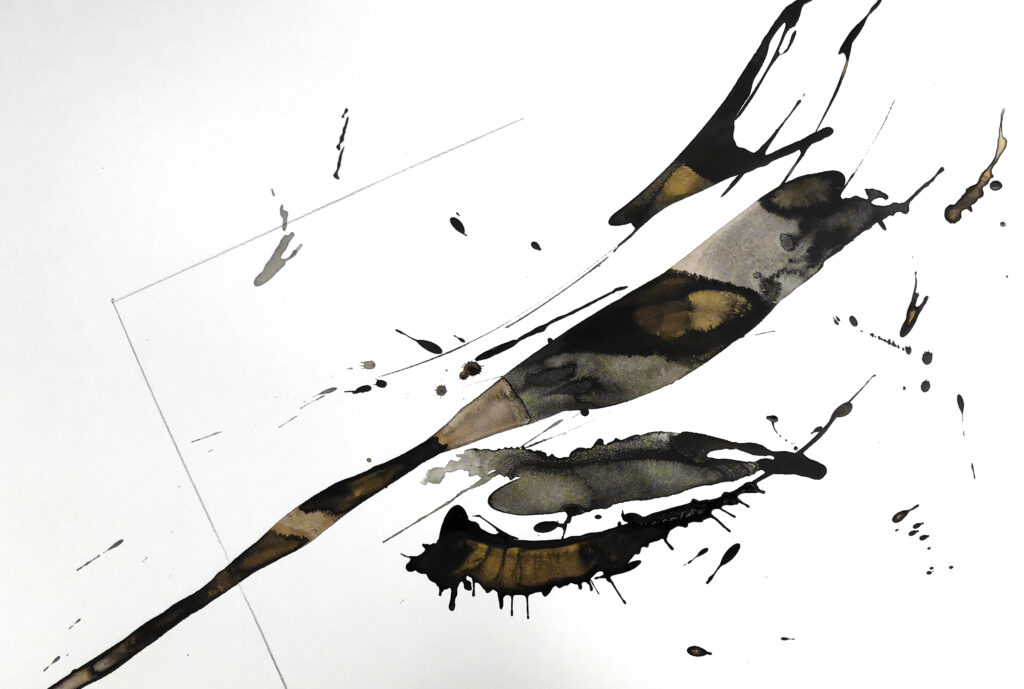Yan Cheng

Yan Cheng
The World as Will To Live and Representation We Perceive
APRIL 30 – MAY 4, 2018
Artist Statement
My exhibition contains works in various mediums, including drawings, photographs, sculpture and installation that creates a “micro Gesamtkunstwerk” informed by philosophy and aesthetics. Each of the works is bounded – aesthetically and sometimes physically – by other works made in a similar medium, and invite the possibility for narratives, with each narrative contributed by viewers to the exhibition in different ways.
My drawings are made with Chinese calligraphy black ink, iridescent calligraphy color (“copper plate gold”), and different grades of graphite pencil. The photographs are taken of charcoal drawings on paper towels, and modified though Photoshop. The sculpture contains wood, branches, and stones which were found around campus, silkworm cocoons from China, and knittings I made myself, and the installation is composed of paper rolls, paper lanterns, and paper umbrellas.
Working with many different mediums in the works, I perceive the same object but make very different representations of it. I wish to use multiple ways of making art to initiate a dialogue with my viewers about a single idea; that idea is about how elusive the nature of our representations and perceptions are. The 19th century philosopher Schopenhauer described the world as Will, (our) will to live, and representation. He suggests that our human “will to live” is never objective, beyond our own bodily sensations. I was very touched by his ideas about the relationship among body, will, and representation – that the combination of our will and representation create our “perceptual” selves. Within my work, for example, the drawings address the concept of unconscious time – an autonomic time, running in the background and beyond our control, but the photograph of the drawing is about our sense of conscious time. The sculpture addresses symbolic meaning as representation by working against conventional readings of those qualities, and also occupies space and time differently than “flat” works.
Each work of art, as an individual existence while being outside of our body, triggers our internal, conscious bodily, physical senses. As our body responds to those physical senses, our brains automatically create messages between neurons to allow different parts of the brain to communicate beyond, or beneath, our consciousness. Certain patterns of the triggered neurons allow us to feel certain emotions. I wish to use this exhibition to evoke viewers’ thoughts about the tension between physical representations from our consciousness and mental perception from our unconsciousness, and use this tension as a lens to view the world.
Reception
Wednesday, May 2 5-7pm

